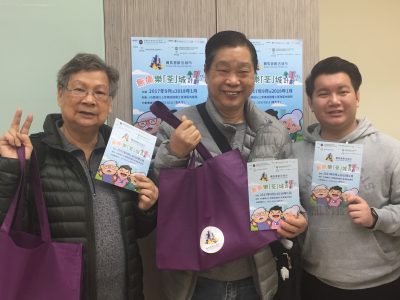Jockey Club Age-Friendly City Project – Painless Living @ TW



According to the baseline assessment conducted in 2016 with reference to the eight Age-Friendly City (AFC) domains, ‘Community Support and Health Services’ was rated the lowest. Senior residents wish to receive health therapies, such as Chinese medicine and acupuncture, to maintain their health before they become frail.
With a subsidy of HKD500,000 provided by The Hong Kong Jockey Club Charities Trust, a district-based program entitled the ‘Jockey Club Age-Friendly City Project – Painless Living @ Tsuen Wan’ was implemented to prevent and relieve body pain in the elderly via health therapies, which can raise interest in maintaining a healthy body. The programme is a joint effort of the Working Group on Age-Friendly Community and Rehabilitation under the Social Services and Community Information Committee of the Tsuen Wan District Council, the Yan Chai Hospital Chan Feng Men Ling Integrated Community Development Centre, the Yan Chai Hospital Wilson Tsang Churk Ming Traditional Chinese Medicine Pain Treatment Centre, the Yan Chai Hospital Yim Tsui Yuk Shan Active Mind Centre, the Yan Chai Hospital Fong Yock Yee Neighbourhood Elderly Centre and the Yan Chai Hospital Mrs Annie Chan Social Centre for the Elderly.
206 older adults who had problems with pain joined the programme. Each received five sessions of Chinese medical consultation with prescriptions or acupuncture treatment. 109 of them and their carers attended two talks on Chinese medicine and learning exercises to maintain their health. 43 older adults with emotional problems joined the support group to learn how to skilfully manage body pain under the guidance of a social worker who serves as the case manager. 138 community participants participated in a workshop about the concept of an age-friendly.
Website: https://www.jcafc.hk/en/events?id=316
Main target group: Older people with chronic health conditions or disability
Other target group(s): Health senior residents are involved as volunteers to enhance interaction with participants and their family members
Sector(s): Health
Other sector(s): social participation
Desired outcome for older people:
Meet their basic needs